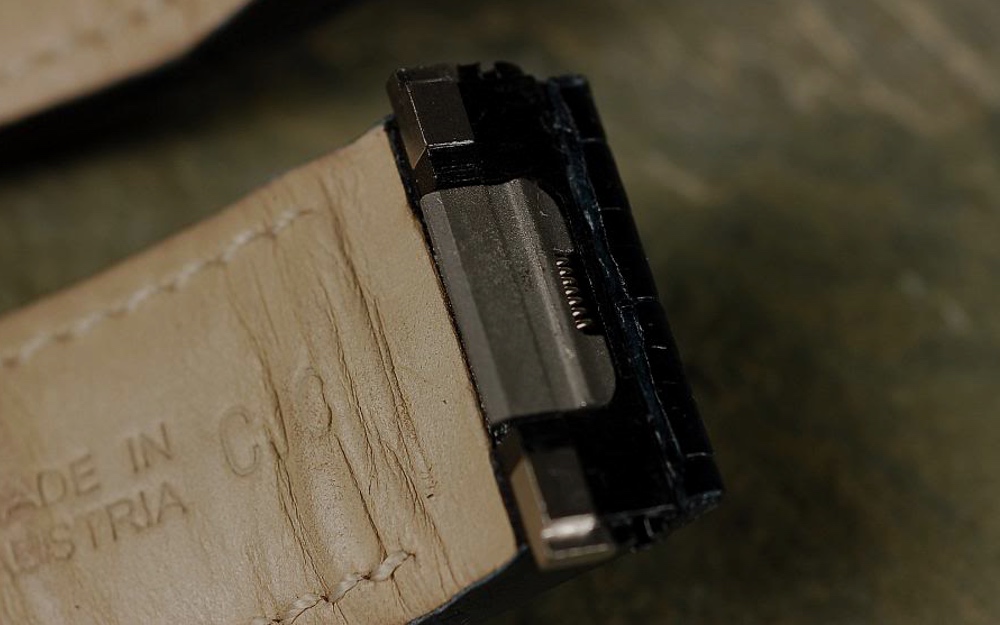
Did Apple Watch Steal Its Quick-Change Band System?
As an aside, I don’t think the band removal system on the Apple Watch is particularly novel. I’ve seen Jaeger Le Coltre [sic] and Cartier watches with the same pushbutton system for years. Apple steals!
As Biggs says, the above is merely a side note in a largely favorable review (which is well worth reading, as the author is a mechanical watch enthusiast who — against all expectation — has made daily space on his wrist for Apple Watch).
But I’m not sure Biggs is quite right about the Bands. The idea for a quick-swap, tool-less strap interface has probably been around almost as long as wristwatches themselves, and it’s likely impossible to narrow down the historical list of who initially came up with the idea, or when. Nobody thinks Apple’s the first manufacturer to look at wristwatches and say, “Hey, maybe it shouldn’t take a tiny screwdriver and ten minutes of delicate, careful, potentially case-scratching work for customers to change out their watch straps.” Naturally, ye olde watchmakers and smiths probably didn’t want customers doing this sort of paid work themselves, but the notion’s not new.
So I agree: The basic idea behind Apple’s system isn’t novel. But the system itself absolutely is. And that novelty, as seems to be the case with most Apple products, is found primarily in said system’s flawless execution. Changing the Bands on Apple’s wearable is a far simpler and faster process than those offered by Jaeger LeCoultre or Cartier et al. The former advertises that you can change their bands “in under two minutes.” I can swap my Apple Watch’s in about two seconds. Here’s a video of JLC’s system (demonstration starts at 3:32):
There’s one caveat with Apple’s side in all this, though, and that’s perception: The Apple Watch system seems somewhat delicate. There’s just the one tiny anchor point in the middle of the chassis’ receiver, after all. To the casual observer, this probably won’t appear to have quite the same inherent strength of those other brands’ dual-peg, spring-loaded solutions. But I think it might actually have more (albeit I’m unwilling to test the theory on mine, for obvious reasons).
Indeed, I think the aforesaid anchor point is less load-bearing and more indexing. The real strengh — and the real ingenuity — of Apple’s Band interface is in the physical form of the case cutout itself. You have to slide your Band in from either side, and the patented shape of that inlet — in tandem with the patented shape of the Apple Watch Band end — allows the Band to be wedged in securely. Because of this mechanical advantage over those mechanical watches (irony!), I’d say the Band system is Apple Watch’s most compelling selling point among traditional watch enthusiasts.
It’s the only real lesson the high-end Swiss watch industry actually stands to learn from Cupertino.